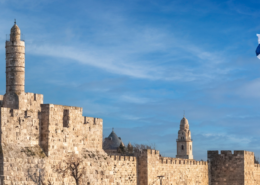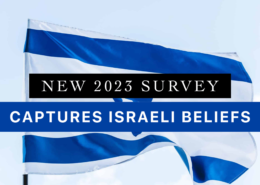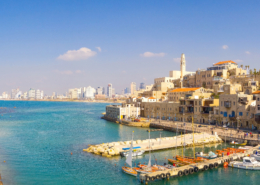THE MEANING OF PASSOVER
THE PURPOSE OF THE SEDER
As a Jewish believer, the Passover is very meaningful to me as it speaks into our lives as believers. Jewish people teach that every year we are commanded to go back to that very first Pesach and “experience” it as if we were the ones who left Egypt; so that the story becomes our experience and our responsibility to pass it on to the next generation.
Before Passover begins, Jewish homes must be cleaned, and all yeast must be removed in obedience to God’s command.
Exodus 13:6-18 For seven days you shall eat unleavened bread and on the seventh day, there shall be a feast to the Lord. Unleavened shall be eaten throughout the seven days, and nothing leavened shall be seen among you in all your borders. And you shall tell your son on that day, saying, it is because of what the Lord did for me when I came out of Egypt.’
Interestingly the Apostle Paul draws a parallel with the Passover practice of getting rid of the leaven to teach us about holiness by comparing the leaven which causes bread to rise to sin.
It is actually reported that there is sexual immorality among you, and of such a kind that is not tolerated even among the pagans . . . Your boasting is not good. Do you not know that a little Leaven leavens the whole lump of dough? Cleanse out the old leaven, that you may be a new lump, just as you really are unleavened. For Messiah, our Passover has been sacrificed. Let us therefore celebrate the feast, not with old leaven, the leaven of malice and evil, but with the unleavened bread of sincerity and truth. (2 Cor5:1a, 6—8)
THE FOUR CUPS
in the Passover are the 4 cups of wine that remind us of the promise God made to Moses in Ex 6:6
I will free you from the burdens of the Egyptians.
I will deliver you from their bondage.
I will redeem you with an outstretched arm and through extraordinary chastisements.
I will take you to be my people…
These are the 4 promises that remind the Jewish people of the way that God led us out of bondage and brought us to Sinai and into a covenant relationship with the Almighty.
Because the Church is joined to Israel through the Messiah you share in this history so not only did God redeem the Jewish people 3.500 years ago from Egyptian bondage — He also sent the Messiah to die for all of us as a guilt—offering, so that we might be eternally redeemed from bondage to Satan. God set His people free to serve Him and worship Him throughout eternity. Jesus is the centre of the Passover celebration and every Passover seder celebrated points to Him as our Passover Lamb
THE PASSOVER PLATE
At every Passover, there is a plate to remind us of the spiritual lessons of the Passover.
PARSLEY FOR HYSSOP (Dipping of Vegetable)
The first that is eaten during a Passover meal is the parsley which we dip into salt water, which is symbolic of the tears the children of Israel cried during their bondage to Pharoah.
The Karpas is a humble vegetable growing low on the ground and reminds us how God took a slave nation and grew them in a treasured people – a kingdom of priests.
Then Moses called all the elders of Israel and said to them, “Go and select lambs for yourselves according to your clans and kill the Passover lamb. Take a bunch of hyssop and dip it in the blood that is in the basin andtouch the lintel and the two doorposts with the blood that is in the basin. (Ex 12:21-22)
It also reminds us that the Exodus began with Joseph’s brothers selling him into slavery and dipping his coat in blood to convince Jacob that his son was dead. So the Passover story begins with dipping in blood and ends with the hyssop branches dipped in the blood of a lamb and the lintel of their doors sprinkled so that the Angel of Death would pass over them. So, the parsley also reminds us of the hyssop that was used to put the blood on their doors. Moses in Exodus 24;8 sprinkled the people as a sign that God has ratified His covenant with them.
Today our hearts are sprinkled with His blood to …..cleanse us from an evil conscience (Heb10:22)
THE BREAD OF AFFLICTION (Breaking of the Middle Matzah)
Some rabbis have many explanations for the matzatash which has 3 pockets into which three pieces of matza are placed. Believers in Messiah think that the best explanation here concerns God’s unique character, that these three matzahs in one matzatash point to His unique unity as Father, Son, and Holy Spirit.
The Matzah known as the Bread of Affliction t is taken out and broken in half; it represents the food eaten by slaves. The matzah of affliction reminds to identify with our ancestors in their slavery. One half is wrapped in a white linen napkin and hidden. It is called afikomen, reminding us of the deliverance God wrought for us.
I read that some rabbis call it the Bread of Faith The children of Israel were oppressed slaves they had had the joy of life beaten out of them and the rabbis say that their faith was at an all–time low – many were so oppressed that faith was a luxury many could not afford!
“On Passover eve, God ignited this small seed of faith with a tremendous revelation of His might and truth, blasting our souls free of the chains that had imprisoned them in an internal slavery far worse than any physical bondage. It was this faith, and this faith alone, that took us out of Egypt and set us on the road to Sinai. The prophet Jeremiah describes the moment when he says: “So says God: I remember your youthful love, your bridal devotion, following Me out to the desert, to an unsown land.”
THE BREAD OF AFFLICTION HAS BECOME THE BREAD OF FAITH!
So, it said by some, that the matzah, not the wine, is the true symbol of the Exodus, the symbol of our freedom and nationhood.
The purpose of the Passover meal is to tell the story of the deliverance of other people, and the judgments of God. God directed a powerful campaign of Spiritual Warfare against different demonic powers worshipped by the Egyptians.
On the Passover Plate is a roasted egg which is a symbol of mourning in Judaism. It a reminder of the destruction of the Temple in Jerusalem and of the roasted lamb that was eaten on the night before they left Egypt and subsequently offered while the Temple functioned. In John 19 Jesus is put to death on the Day of Preparation at the same time that the lambs were being slaughtered in the Temple.
THE LAMB BONE
The unbroken shank bone of a Lamb is on the Seder plate to remind us of the paschal lamb slain in Egypt; its blood was painted on the doorposts as the angel of death passed over Egypt killing the firstborn. It was a proclamation that the people had not only heard the word of God to them but had trusted in it believing that they would be saved from death. It symbolizes Freedom. Not only had the Egyptians experienced 10 powerful and miraculous plagues but now God tells the Israelites to take a male lamb and demonstrate that the Ram God of Egypt was powerless.
It speaks to us today of Jesus our Passover Lamb (I Cor 5:7)who was sacrificed to save us from sin and death. Behold the Lamb of God who takes away the sin of the world (John 1:29)
BITTER HERBS
In Exodus (Ex 12:8) we read: “They shall eat the flesh that night, roasted on the fire; with unleavened bread and bitter herbs they shall eat it.”
For Bitter Herbs, we use Horseradish to remind us of the bitterness of slavery and suffering in Egypt. It also reflects the state of our hearts made bitter from our troubles and sin (Eph 4:31)
THE SANDWICH
On the plate, there is charoset, a sweet dish that looks like the mud and clay that was used in Egypt to make the bricks.
We eat charoset together with horseradish because the Rabbis say that all labour and travail when done for God even if it is hard, it is also sweet because it is done for Him.
Hillel was a famous Jewish rabbi who died either around the time of Jesus’ birth or while. He may even have been among the wise men that Herod gathered to advise him where the coming Messiah would be born. (Matt 2:3) This sandwich is attributed to him.
It was Hillel’s sandwich that was the ‘sop’ that Jesus gave to Judas. It was traditionally given by the leader to the person he loved the most or honoured at the table.
Jesus answered, He it is, to whom I shall give a sop when I have dipped it. And when he had dipped the sop, he gave it to Judas Iscariot, the son of Simon. When we think of the sop the first thing we see is Yeshua identifying the one who would betray Him and how after taking the sop Satan entered him. Yet in giving the sop to Judas,
Jesus was showing him His love and offering him a chance to repent and when he didn’t Satan entered him, and Yeshua told him to go quickly and do what he must. (Jn13:21-30)
The custom of giving the sop is not always observed today but most Messianic communities do because Jesus did.
THE APHIKOMEN AND THE LORD’S SUPPER
In Jewish homes after a game for the children to find the Afikomen; it would then be broken into small piecesand everyone given a piece to eat. There is no accompanying blessing. It is the last piece of food to be eaten as it represents the Passover Lamb which can no longer be sacrificed and eaten as a result of the destruction of the Temple. But in Messianic Passovers, we do something different with the Afikomen!
This is because the Afikomen is a prophetic picture of Jesus.
|
Middle Matzo is broken |
Death of Jesus |
|
It is wrapped in a white cloth & hidden |
Burial of Jesus |
|
It is retuned at the end of the meal |
Resurrection of Jesus |
|
Finally, it is eaten with the 3rd Cup – the Cup of Redemption |
The Lord’s Supper |
Last Wednesday, The Antiquities Authority (IAA) announced that they had for the first time, found evidence in Jerusalem of this earthquake which occurred 2,800 years ago! It was discovered in an archeological dig in the City of David National Park, and researchers confirmed that the destruction they found, can only have been caused by an earthquake. This is because no evidence of flooding or fire is present.






